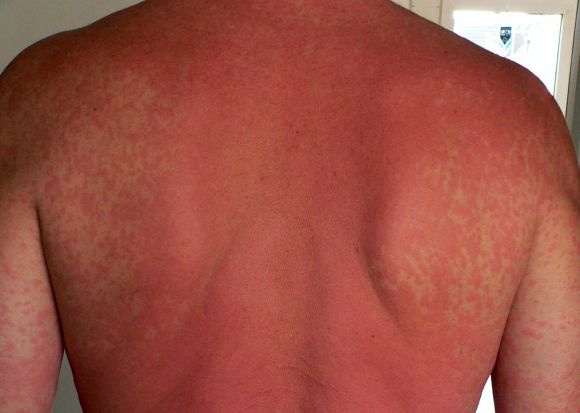5 Exclusively Raw Food? Really?
When exceptions play a role. Intolerances and allergies, which can occur with any type of diet. A raw food diet can work wonders for high blood pressure.

Table of contents
Summary
Now you understand the basic reasons why you should move toward a raw food diet. But there are still other important reasons to make this change. And perhaps, you aren't sure how to eat right on a raw food diet. Both of these subjects will be discussed in the subsequent articles.
In addition, other texts are being written. After you have the relevant knowledge, then it is up to you to take responsibility for your health. But there are still two things that you must do if you want to successfully switch to a raw food diet.
1. An exclusively raw food diet?
In one article, I mentioned that I only call people raw foodists if at least 90% of the foods they consume are raw. But the proportion of raw food should actually be closer to 99%. But why? A few exceptions here and there don't hurt—or do they?
An especially tempting dessert? Is that really raw? Yes! Because it is made with raw chocolate. This is an example of what is available in a top vegan restaurant. Things like this should, however, only be enjoyed by raw foodists on occasion. Otherwise, the expression “pudding vegetarian” would apply. But as an exception, desserts like this are a fantastic treat.
- There are at least two reasons that speak against making exceptions. First, exceptions tend to be repeated and become the norm, and as a result, you will end up getting frustrated and quit.
- And second, after a few months of a strict raw food diet, you will feel your body react to cooked food immediately and possibly also to dairy products—at least if you develop more body awareness or if you already have this. Older people are also more sensitive and often experience problems with digestion, especially after dinner. See also this book review that deals with dairy products.
If you see raw foods as “medicine,” then you should adhere very strictly to the diet
Your motivation for eating a raw food diet is the most important factor. If serious health issues aren't the reason why you switched to raw foods, then occasional exceptions will certainly not have an adverse effect. Perhaps you want to order a “normal” dish in a restaurant and decide on cooked vegetables or also fish.
In the first seven years, 1978 to 1985, I ate a very strict raw food diet. When I was invited to people's houses, I even brought my own plate of raw foods with me. But now, I usually eat cooked foods once or twice a week so that in a month with 90 meals, I deviate from raw food about 4–7% of the time. I owe this to my wife.
In a Japanese restaurant, we might have sashimi, a dish with raw fish and raw vegetables, which we like to have together with some cooked rice as sushi and a vegan soup. It is usually more difficult when it comes to your favorite dishes, sweets, or meat. When you make exceptions, you remember again what these taste like and you constantly crave them.
Eating with friends in a fancy raw food restaurant can be a pleasant surprise. Our guest Simon Mulligan, a well-known pianist, was delighted and pleasantly surprised.
After a few months, it will become clear—if you have reached a certain age—that you don't tolerate cooked foods as well in the evening. They can disturb your sleep. This is an important piece of evidence showing how raw food affects your body in an entirely different way as compared to cooked food. Your initial transition to raw food will also have noticeable effects. Most raw foodists say, so long that they are vegan, that they now sleep better and deeper.
2. Food allergies and intolerances
Many people have allergies to dairy milk, soy, eggs, fish, or chocolate. But citrus fruits, celery, and nuts are also known to be common allergens. If you have never eaten one of these three foods raw before and you have other allergies, you should first try a small amount and then increase this amount slowly over the next several days. Watch for hives or diarrhea.
Allergy sufferers tolerate certain types of vegetables better if they cook them for two minutes or freeze them for two weeks.
World map showing places where lactose intolerance is common (by percent). This dairy intolerance is least common in northern Europeans who have drunk milk for thousands of years. A bloated stomach is the main sign of intolerance.
Lactose intolerance
The most well-known example of food intolerance is probably dairy intolerance.
Lactose intolerance and malabsorption are not as well known in northern Europe and the United States, but they are a problem in other regions of the world (see map above).
They are caused by an enzymopathy such as in the case of hereditary fructose intolerance, galactose intolerance (galactosemia), histamine intolerance, sucrose intolerance, and sorbitin intolerance.
The hydrogen breath test is a noninvasive diagnostic method that has been used to identify various gastrointestinal tract syndromes since 1969. This test is recommended at least in cases of lactose intolerace and fructose malabsorption. This test has to be conducted more frequently today as the food industry adds cheap fructose to foods.
Since an ever increasing number of people are suffering from allergies, I have included several explanations here.
I have never heard of anyone developing allergies in the process of switching over to raw food, but I am sure that it happens. Most raw foodists do try entirely new fruits and special vegetables that they have never before had uncooked.
Even healthy natural products can cause allergies or intolerances in certain people. Reactions to pesticides or other chemical sprays occur or can be the cause.
I would therefore like to share a quote on this topic from an article that appeared in the magazine Puls-Tipp Nr. 4 (issue: April 18, 1997): When laypeople talk about an allergy, they usually mean ʽThis doesnʼt agree with me.ʼ Professionals, on the other hand, differentiate between true allergies and intolerances. The difference lies in the severity of the symptoms and in the different types of treatment.ʽOnly people who have a genetically mediated disposition can develop allergies—they then have atopy,
explains Professor Brunello Wüthrich, specialist for food allergies at the allergy station at the University Hospital Zurich.
2.1. Allergies

In this part of the world, the number of people who are predisposed to allergies remains steady at about 30 percent of the population.
However, the number of allergy sufferers is increasing. Experts cite environmental pollutants, not building up our immune systems, and new lifestyles as the cause. When a person who is at risk has more contact with a possible allergen, the chance that they will develop an allergy increases,
says Wüthrich.
The text continues: In the case of a true allergy, the immune system is always involved. If a person is prone to allergies, their body forms special antibodies (Immunglobuline E (IgE)) after the initial contact with the allergen. Each time there is new contact with the allergen, the body fights the foreign substance—it reacts with skin rashes, diarrhea, or asthma attacks, and in the worst case with anaphylactic shock, which can be fatal. The most important difference to other types of intolerances is that even the smallest amount of the specific food is enough to cause very strong reactions.
Immunglobulin E (IgE) is an antibody (used to be called Gamma Globulin E) that mainly works to defend the body against parasites.
2.2. Intolerances and food intolerances
The text goes on, A food intolerance can have various causes, but the immune system is never involved. Therefore, the worst immediate reactions characteristic of an allergy do not occur. Frequently, the person affected lacks a digestive enzyme that the body usually produces on its own, which is why they can't, for example, process lactose, gluten (grain protein), or fructose. They also have to avoid this food, but sometimes they can tolerate it in small amounts.
A typical reaction is a bloated abdomen or upper abdomen after eating certain foods. This can last for hours and can lead to a more watery stool or even to diarrhea.
Write down what you eat and how you prepare each meal. Perhaps you can't digest plant oils very well or certain plant oils, such as olive oil, or you can't tolerate mushrooms.
Often, people have a DAO deficiency (diamine oxidase, also known as histaminase) or histamine intolerance or enzyme deficiency syndrome. In some cases, the cause can be a lack of water-soluble vitamin B6, which can't be stored by the body. For more information, see the article essential nutrients.
Good vegan sources of vitamin B6
Good vegan sources of vitamin B6 are the following: cabbage, green beans, lentils, lamb's lettuce, potatoes, whole-grain products, wheat germ, nuts, brewer's yeast, wheat beer, avocados, and bananas.
In the simplest cases, you can just regularly take dry brewer's yeast, but if that doesn't work, then try vitamin B6 tablets.
In difficult cases, you can also take the enzyme DAO in tablet form (e.g., DAOSiN®). That will effectively compensate for a DAO deficiency, as well as for an enzyme deficiency or an enzyme defect.
The Swiss Interest Group Histamine Intolerance (SIGHI) quotes and provides links to additional articles, also some that focus on causes.
However, in the German entry on diamine oxidase on Wikipedia, we read A product with diamine oxidase that has been obtained from pig kidney protein extract is sold in capsule form with the purpose of dietary management of food intolerances caused by histamine.
Histamine is a neurotransmitter that causes inflammation and unnatural swelling, and is also an important regulator. The pharmaceutical industry developed antihistamines (histamine antagonists) to treat allergic reactions and manage mental illness.
Antipsychotics came later and are used to suppress Tourette syndrome, depression, obsessive-compulsive disorder, autism, and also schizophrenia. They suppress the neurotransmitter "dopami.." in the brain.
Understanding histamine
As understanding histamine is so important, I would like to quote a passage from the German version of Wikipedia (including the links):
Histamine (Ancient Greek: ἱστός histos, tissue)—in the nomenclature: 2-(4-Imidazolyl)-ethylamine—is a natural product that works as a tissue hormone and neurotransmitter in humans and animals and is also very common in the plant kingdom and in bacteria. In humans and other mammals, histamine plays a central role in allergic reactions and is an integral part of the immune system, working to defend the body against foreign substances.
It therefore serves as one of the neurotransmitters in an inflammatory response (inflammation) and causes tissue to swell. Histamine is also an important regulator in the gastrointestinal tract, in the regulation of gastric acid production and motility, in the central nervous system as it controls the sleep-wake cycle, and in appetite control. From a biochemical perspective, it is a biogenic amine as are tyramine, serotonin, "dopami..", adrenaline, noradrenaline, and octopamine. It is formed when carbon dioxide is released from the amino acid histidine, and it is stored primarily in mast cells, basophil granulocytes, and neurons.
Histamine from Wikipedia (German version)—its story:
The story of research on histamines began in 1907, when the German chemists Adolf Windaus and W. Vogt. synthesized it and found it to be a chemical oddity. Just three years later, Henry H. Dale and G. Barger showed that histamine is present in ergot fungi, thereby proving that histamine is a natural product. In the same year, Henry H. Dale and P. P. Laidlaw established that histamine is a substance produced naturally in the body. At the same time, Dale and Laidlaw explained several basic functions of histamine. Also in 1910, the biosynthesis of histamine from the amino acid histidine was explained by Dankwart Ackermann.
In 1937, Daniel Bovet and Anne-Marie Staub first discovered substances that inhibit the effect of histamine (antihistamines). Only five years later, phenbenzamine and mepyramine became the first antihistamines to be used as treatment. At the beginning of the 1950s, the French pharmaceutical company Rhône-Poulenc developed the first antipsychotics as part of its antihistamine research. In 1972, James W. Black and his colleagues were able to differentiate between H1 and H2 receptors. Further subtypes of histamine receptors were then also discovered. In 1983, Jean-Michel Arrang discovered the H3 receptor using pharmacological methods, and in 2000, the H4 receptor was identified through decoding of the human genome.
2.3. Pseudoallergies:
Also from Wikipedia (German entry): Pseudoallergies are a subgroup that comes under intolerances. The symptoms resemble those of a food allergy, but the immune system is not involved here either. With pseudoallergies, the strength of the reaction is usually closely connected to the amount of the substance consumed. The causes have not yet been researched in any real depth.
In 1997, statisticians estimated that between 3'000 and 5'000 people in Switzerland were allergic to soy (1997: population about seven million). Soy is in about 30'000 products, which are being sold in ever increasing amounts.
3. Hidden food allergies
This group brings us to another overarching term. I can't analyze them based on their physical cause and therefore am not classifying them as food intolerances or allergies, but am using this new term.
You do not need any type of measuring device for allergies, food intolerances, or pseudoallergies. These will all be obvious. But hidden food allergies are not obvious or well known. In accordance with the quote above, they do not seem to be discussed in the medical world.

Article in Die Welt (German newspaper) titled Hinter Allergien können Zusatzstoffe stecken (Food additives can cause allergies).
A personal experience
I have a personal experience that fits in well here. My wife (born in 1959) was not accepted to a diving school because her blood pressure was too high. That must have been around the year 2000.
It was then that I learned that she had taken take beta-blockers more than five years before this. Her blood pressure had normalized and her physician then recommended that she stop taking the pills. ... After that, no one noticed this serious problem.
We went to a heart specialist in Lucerne, and an examination that cost about 2'000 Swiss francs gave the following diagnosis: essential hypertension or primary hypertension.
The umbrella term used here is arterial hypertension—commonly called high blood pressure. And she also had a heart rate (pulse) that was much too high. In other words, this was a constant stress that would drastically reduce life expectancy, if left untreated.
It was recommended that she again take beta-blockers although they have possible and known side effects.
Wikipedia: Given the well-established effectiveness and the favorable side-effect profile and the widespread occurrence of the diseases treated with beta-blockers, they are now one of the most frequently prescribed drugs. In 2006, 1.98 billion defined daily doses (DDD) of beta-blockers were prescribed in Germany. The most well-known and by far the most commonly prescribed medication is "Metoprol.." (for the year 2006: 780.9 million DDD).
I decided to look for an alternative. I asked an older, well-respected pharmacist if he knew of a natural means of treatment. He took an initial medical history and looked up some information in one of his reference books and then recommended a plant-based or homeopathic medication. I can't remember what it was called, but it proved to be effective after only 14 days. He then researched her case again and gave her a remedy that is actually for the liver, Olea europea. It helped, but my wife soon quit taking it and didn't tell me that she had done so.
Later, for my benefit, we decided to switch to a vegan raw diet.
After I checked our blood pressure about 14 days later, I said to my wife that I was happy that she was still taking the natural remedy, and she then told me that she had stopped some time ago.
Conclusion: If you have high blood pressure, it is worthwhile to at least try a vegan raw diet, for example, you might adhere strictly to the diet for 14 days and then measure your blood pressure to see if it has improved. I also recommend this for endometriosis, but it takes a time period of 18 months for it to regress.
We, ourselves, really didn't expect such amazing results. By the way, endometriosis disappears following menopause. But my wife didn't go through menopause until many years later. Eating this type of diet surely doesn't make every type of high blood pressure disappear, but it is certainly worth a try.
As soon as she would eat the cheese she loved so much, her blood pressure would go up. I also experienced that eating milk or cheese can cause bad breath. Cutting out certain foods can be worth it in cases like these. None of this costs anything, one reason why this isn't common knowledge.
There are most likely physicians with a holistic approach and naturopaths who are familiar with this method. I would be happy to report on similar experiences that you've had. Please take the opportunity to leave a comment in the box below.




Comments